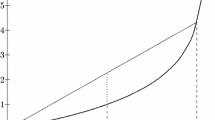Abstract
The design of algorithms for sending confidential messages (i.e. messages that no one can read, except the intended receiver) goes back to the beginning of our civilization. However, before the widespread of modern computers, cryptography was practiced by few people: soldiers, or diplomats, or scientists fascinated by the problem of confidential communication. Cryptography algorithms designed in the past were ingenious transformations but were lacking a sound mathematical basis. Recently, the development of computers and of the Internet has opened up new applications of cryptography in business and society. To answer these needs, new algorithms have been developed that use sound mathematical techniques and have produced surprising results, which have opened up impressive possibilities that were considered unrealistic before. We will see examples of algorithms that use modular arithmetic (in which operations are performed modulo an integer) that are based on using functions that are easy to compute but difficult to invert.
Access this chapter
Tax calculation will be finalised at checkout
Purchases are for personal use only
Similar content being viewed by others
Notes
- 1.
In particular, when buying a product on the World Wide Web and providing the payment information, the web protocol automatically changes from http to https. The https protocol is able to realize cryptographic encodings that are not possible with the http protocol, the one usually used for browsing the Web; the final letter of https means secure.
- 2.
Specular writing is handwriting that is written from right to left (left-handed writing), and therefore can be only deciphered by means of a mirror.
- 3.
The text must be long enough to meet the average frequencies of characters. In fact, it is not difficult to write short sentences in which the frequency is very different.
- 4.
As an example, the probability of guessing a secret key of 40 decimal integers is smaller than the probability of having 130 consecutive heads while tossing a fair coin.
- 5.
In fact, even though we do not have a formal proof of intractability, the problem is considered intractable.
- 6.
The adversary who only listens to the communication is called a passive attacker and is the weakest possible adversary. An active adversary is one who is able to send messages on behalf of others and possibly intercept and modify messages posted by others. The method proposed by Diffie and Hellman is secure with respect to a passive adversary but it is not resilient with respect to an active attacker. We refer to [66, 78, 104] for how to cope with active adversaries.
- 7.
Recall that e and (p − 1) ⋅ (q − 1) are relatively prime if the Greatest Common Divisor of e and [(p − 1) ⋅ (q − 1)] is 1.
- 8.
Recall that f is a prime factor of n if 0 is the remainder of the division of n by f and f is different from 1 and n (in fact, we can also say that 1 and n are trivial factors).
- 9.
The reason for including date and time in the next message will become clear shortly.
References
Hinsley, F.H., Stripp, A. (eds.): Codebreakers: The Inside Story of Bletchley Park. Oxford University Press, New York (2001)
Kahn, D.: The Codebreakers. Macmillan, New York (1967)
Kaufman, C., Perlman, R., Speciner, M.: Network Security: Private Communication in a Public World. Prentice Hall, Upper Saddle River (2002)
Menezes, A., van Oorschot, P., Vanstone, S.: Handbook of Applied Cryptography. CRC, Boca Raton (1996)
Singh, S.: The Code Book: The Science of Secrecy from Ancient Egypt to Quantum Cryptography. Doubleday, New York (1999)
Stallings, W.: Cryptography and Network Security. Prentice Hall, Upper Saddle River (2007)
Author information
Authors and Affiliations
Corresponding author
Editor information
Editors and Affiliations
Rights and permissions
Copyright information
© 2013 Springer-Verlag Berlin Heidelberg
About this chapter
Cite this chapter
Marchetti-Spaccamela, A. (2013). Algorithms for Secure Communication. In: Ausiello, G., Petreschi, R. (eds) The Power of Algorithms. Springer, Berlin, Heidelberg. https://doi.org/10.1007/978-3-642-39652-6_6
Download citation
DOI: https://doi.org/10.1007/978-3-642-39652-6_6
Published:
Publisher Name: Springer, Berlin, Heidelberg
Print ISBN: 978-3-642-39651-9
Online ISBN: 978-3-642-39652-6
eBook Packages: Computer ScienceComputer Science (R0)




